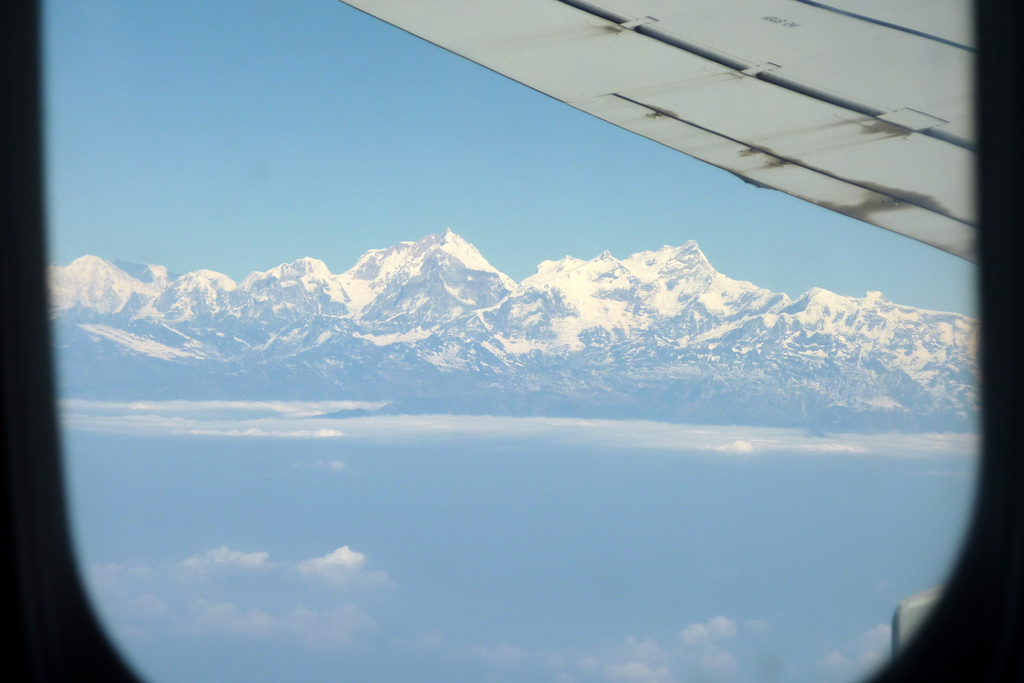A book about man’s quest for himself, The Yoga of Max’s Discontent, originally published by Penguin House in 2016 and available on Amazon, is a book you should read, for many reasons.
First, an arresting premise: The main character, Max, a tall, young man in his late twenties, is the personification of the American dream – from the dark despair of the Bronx projects where he was born to the glitter of Wall Street.
Max is a first-generation immigrant; there’s no father in the family, just a sister and a mother, a Greek woman who earns a meager living from housecleaning and sacrifices herself to see her children educated. He manages to win fellowships to the best schools, gets a Harvard degree and lands a highly paid job on Wall Street. His mother dies, the American dream falls apart.
Second, this book provides an unusually terse, direct picture of the yogis’ complex belief system, complete with Max’s own personal doubts as they crop up – and that approach certainly succeeds in assuaging doubts and drawing in an unbelieving reader.
The book is written from Max’s point of view: With his mother passing away, “now that he no longer had his mother’s voice in his head prompting him to become someone, nothing stopped him from seeking the same insight.”
The “same insight” referred to here, is the yogis’ belief as reported to Max in the simple words of a recently arrived Indian immigrant who is manning an open-air food cart on a Manhattan street corner.

In the photo: Karma Dharma in time of Web 2.0 and Millennial revolution
Max has come across him after his mother’s funeral. The night is wintry and bitter, the Indian cart vendor is naked to the waist, apparently heedless of the cold; he certainly looks something of a yogi.
The man tells him what yogis believe in:
“… the whole world exists in opposites: up and down, cold and hot, darkness and light, night and day, summer and winter, growth and decay. So if there is birth, age, suffering, sorrow and death, then there must be something that is un-born, un-aging, un-ailing, sorrowless and deathless – immortal as it were. They want to find it”.
Max’s curiosity is piqued, it is the starting point of the book.
The departure for India is abrupt, perhaps too abrupt: there’s no show-down with his boss at the bank, no discussion with his sister – why the rush? You might think this makes the Yoga of Max look slightly rushed, perhaps lacking in depth.
But don’t give up: As the story unfolds, Max’s character deepens. This is achieved not so much through backstory telling – the usual technique to deepen a character, a technique that can notoriously slow down the pace of storytelling – but through showing how Max reacts to what happens to him, as his search-for-self accelerates.
This makes for a fast, exciting read, as we follow him first to the Himalayas in winter where he nearly dies in the rigid cold and is unexpectedly saved by a mysterious old woman (not a minor character, she appears again), and next onto a wise guru hidden far away in Southern India, and from there, to yet other places, each stay a new stage in his internal development.
That’s when you realize that the lack of characterization at the outset of the novel is deliberate.
Max could be you or me.
He just happens to be at the end of a long series of reincarnations and he is at last facing the ultimate challenge, can he meet it? Can he become one with the universal “energy” coursing through every living being? Will he succeed in his quest?
That quest is what the book is about. It’s not really about Max as a particular individual in a given time. And that makes The Yoga of Max’s Discontent an unusual novel, where the focus is on the quest rather than on the one doing it.
The quest is done in the light of the Bhagavad Gita. There are strong echoes here of Herman Hesse’s Siddharta, though the novel is not set in the Buddha’s time but in our own. Yet the core idea is the same as in Hesse’s book: spiritual life can only be attained through strict discipline and renouncing the world of business and love, even love for a dear member of one’s family (in this case, Max’s sister).
The fact that Hesse’s novel is one of the author’s favorite should come as no surprise. He asks in his book the same questions about the meaning of life and many of the answers are similar; the river is a source of spiritual inspiration in both books, though it plays a much smaller role in Karan Bajaj’s novel where the Himalayas mountains, with their forbidding peaks, deep caves and slippery glaciers – and even a threatening bear! – are the real protagonists.
I read Herman Hesse’s book when I was in my twenties and it left a profound impression on me. I can honestly say it changed my life, it threw a new light on the world, both the world around me and the world within, it added meaning to the word transcendence (though I am not a Buddhist).
Reading Karan Bajaj’s book brought all those feelings back and for that reason alone, it is well worth reading.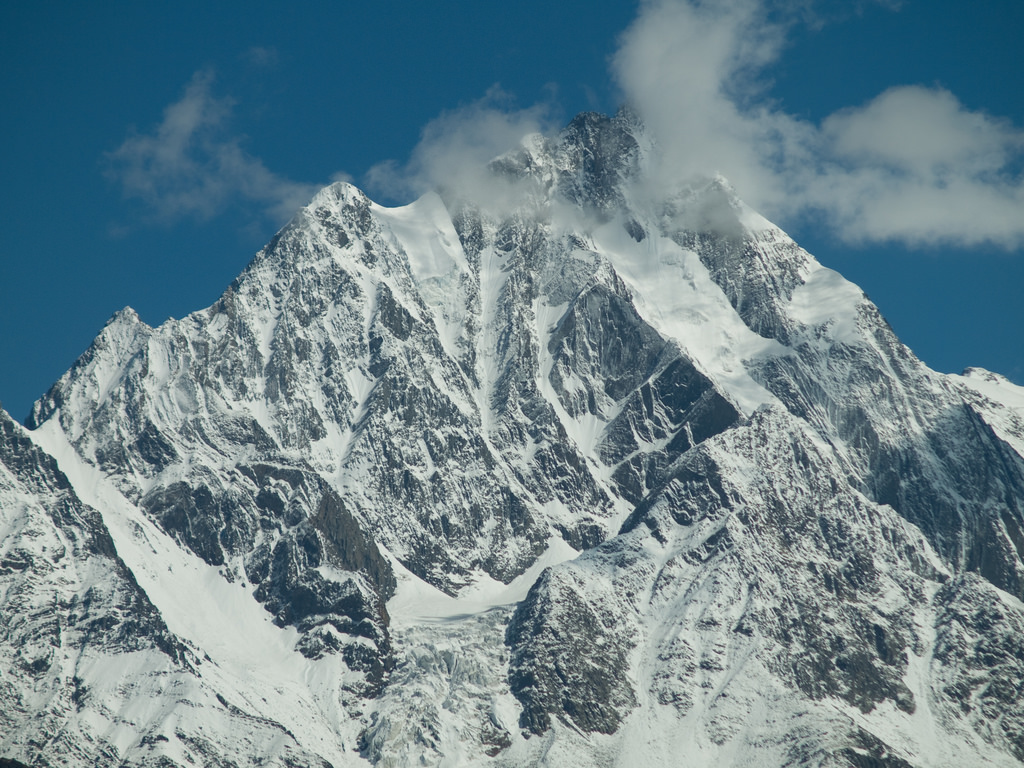
In the photo: snowy peaks of Bhamour (Himalaya)
But Karan Bajaj’s book is something more than Hesse’s which was written eighty years ago, in the 1930s.
This is a book for our times, directly aimed at the kind of business – Wall Street in this case – that attracts today’s gilded, gifted youth; and hence the starting point of the journey to self-discovery. On reflection, having the protagonist escape Silicon Valley and the lure of start-up entrepreneurship might have been an equally good alternative.
No matter, the point is this: a life of spiritual quest is contrasted with the modern business world. That “yoga search” is what the book is about. And that – beyond the focus on yoga and yogis and Indian culture – is what makes this novel profoundly relevant to our times and our world anywhere, and in particular to the younger generations that are more concerned and attuned to moral and spiritual values than previous generations.
I was able to interview the author, Karan Bajaj, who lives and works in New York, and his answers are illuminating, as they reflect his hopes and philosophy of life. But first, a couple of words about him: born in India in 1979, he graduated from the Indian Institute of Management, Bangalore in 2002, eventually came to work in America and is now (2016) the Chief Marketing Officer of Aden + Anais in New York. Married, he is the father of two young children.
The Yoga of Max’s Discontent is his third novel, first published in India under the title The Seeker and now set for an international release on May 3rd by the prestigious Riverhead Books imprint of Penguin Random House that has published writers of immense talent like Junot Diaz and Khaled Hosseini.
When The Seeker came out last year in India, it was an instant success just as his other two books had been, Keep Off the Grass (2008) and Johnny Gone Down (2010). In five years, he managed to get three book deals with Penguin Random House and two Hollywood movie options, while also working as a successful marketing professional in New York – in 2008, he was nominated a “Top 40 Under 40 marketer in the US” by Advertising Age.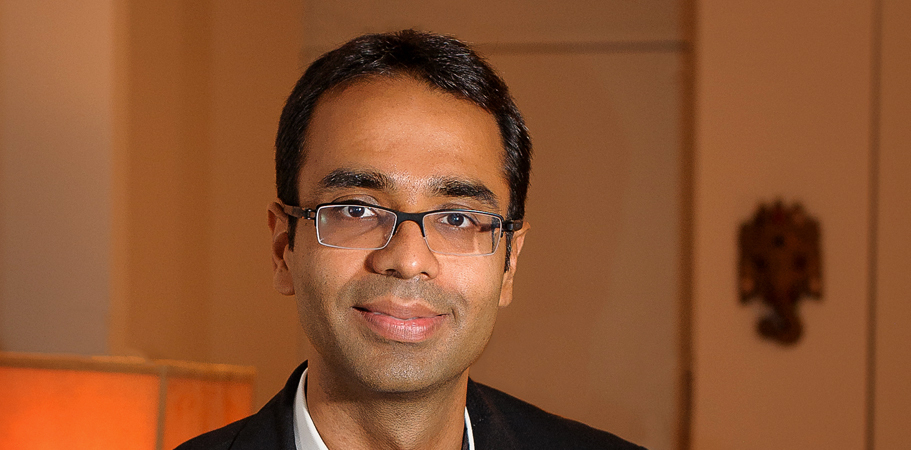
In the photo: Karan Bajaj
Question: You’re a best-selling author and an award-winning marketer, how do you find the time (and energy!) to do it all?
A resume looks so much more impressive in decades than in days! In the days, its mostly full of struggle and rejection but to answer your question more directly, I’ve followed a somewhat unique 4,1,4 model in the last decade:
- 4 Years: Extreme goal-directed living—working at my corporate job, disciplined reading/writing/researching etc.
- 1 Year: Complete slack—take a sabbatical where I travel without a goal, write when I want to, meditate, work in an orphanage, basically allowing myself the space to just be and discover facets of myself without the constant hankering to become.
- 4 Years: Return to corporate/goal-directed life.
…and so on.
I’ve done three cycles of this and traveled, deepened my writing, and learnt yoga and meditation in my sabbaticals while working hard in the four years I’m working. Even in my writing, for four years, I’m very outline-driven, then I completely let go. I think this balance of tight and slack is helping me produce work consistently yet have a hint of transcendence in it.
In American life, much of the focus is on constantly becoming, going from point A to point B, from lawyer to full time writer, for instance. I think there’s some merit in going from point A to nothing versus constantly placing a burden on yourself to re-invent dramatically.
Q: The Yoga of Max’s Discontent shares with your other two books similar protagonists: young men of success whose path forward is suddenly threatened. How is Max different from Samrat Ratan (the 25-year old investment banker in Keep off the Grass) and Nikhil Arya (the NASA researcher in Johnny Gone Down)?
For me, two things have to come together to embark on a novel—entertainment and meaning. And in each of my novels, the meaning has come from the deepest questions I’ve asked myself while the entertainment takes inspiration from a physical quest I’ve embarked on to answer those questions.
The Yoga of Max’s Discontent is similar in that construct but different from the other two because the questions I was trying to answer through this novel were very internal. I wanted to know the cause of pain and human suffering and the real meaning of enlightenment after my mother’s young, untimely death from cancer. So in 2013, my wife and I set forth as monks with a metaphorical begging bowl, going from Europe to India by road with no possessions, then learning yoga and meditation in a remote ashram in the Himalayas.
Both the adventure through secret India—hidden yoga ashrams, surreal night markets, remote Himalayan caves—and my own transformation through the journey are reflected in The Yoga of Max’s Discontent, albeit in a fictionalized form.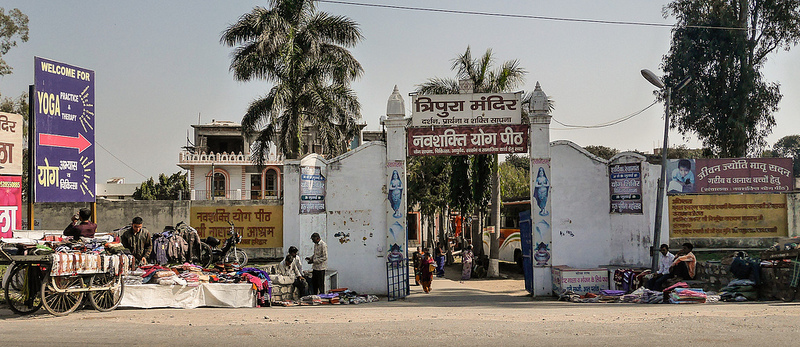
In the photo: Yoga Ashram – Rishikesh
Q: Have you personally experienced any of the adventures that befalls him, the freezing night in the Himalayas, the encounter with the bear, the unexpected episode of violence in the ashram in Southern India etc or have your heard about this from friends?
I’ll answer your question with this anecdote about the novel—I read more than seventy books and hundreds of newspaper articles to research the first thirty pages of the book, which are set in the Bronx housing projects. The remaining 270 pages that are set in India required almost no research at all. For at least a year, I was living Max’s life and the exact things that happened to him either happened to me or I could feel them happen to me very viscerally because I’d experienced similar things.
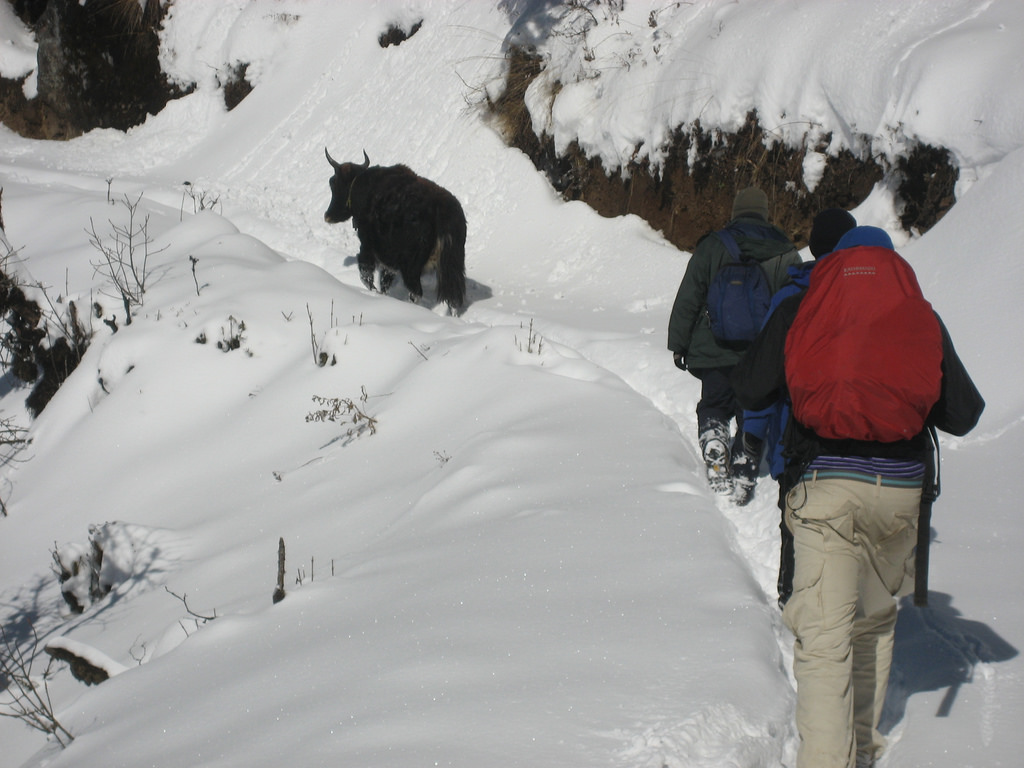
In the photo: Guided by the Yak (Himalayas)
Q: That’s impressive, Karan! It is clear that meditation practices play an important role in your life as a visit to your website (here) instantly reveals. And yoga is of course at the heart of your book. You describe yourself on your website as a “striving yogi” who lives in New York. How do you balance your writing life and your life as a yogi?
Indeed, very much striving! A yogi is on the journey to dissolve himself or herself completely, to become just a vessel for his work to express itself. I slip and fall often but I like to think I’m working everyday towards that ideal. Whether in my writing or my marketing career, I just try to act without attaching myself to the outcome. Like a tree that just grows and bears fruit because that’s its innate tendency, I try to work and write to express my innate tendency without thinking of whether my books will change the world or establish my platform or sell a lot. That’s also the reason I’ve never contemplated becoming a full-time writer. I know the vicissitudes of the writer’s life and the pressure to make money from it to support a growing family will break this sense of flow.
Q: I think your natural audience is the millennial generation, a generation perhaps more than others, focused on seeking values and maintaining them in their own life. In your opinion, is there a move away from consumerism and materialism among young people? Do you see your book The Yoga of Max as providing them with guidance – was that even your intention or your hope for the book?
We have this idea in India that life’s journey is like the flight of an eagle. First, you flap your wings high, as high as you can flap them, growing with experiences in the world. Then, you gracefully bring the wings down, go within and complete your journey. So there’s a role for both and I think you’re seeing that a little in our generation now. You’re seeing young folks who’ve been exposed to a lot of things early with booms and recessions and such and probably feel it’s monotonous to keep running after external experiences, be it houses, cars, travel etc. so they’re choosing to live more silently and simply.
I do think the book will appeal to them but honestly I had no such intention or hope. The yogi’s actions are neither black nor white, so I didn’t set out to do either good or bad in the world when I wrote this book. I just wrote it.
Q: Have you another book in the works? Will it further explore the yoga life or will it be something totally different?
I don’t have another book in the works but I think it’ll be very different from my previous books. In a sense, I’ve just completed a man-on-a-quest trilogy without intending to, where the quest went full-circle from external to internal. Now, I’m embarking on a new life phase with two kids—an eighteen month old and a one month old—and my questions will likely be related to fatherhood. In the same vein, our next sabbatical will be as a family. We have a rough plan of staying in an orphanage in Cambodia for four months, learning Spanish in Spain together, and probably spend some time in Philippines or India with an activity revolving around the kids. My guess is it’ll be an adventure of a different kind versus our usual hard-core backpacking so both the entertainment and meaning constructs will change accordingly.
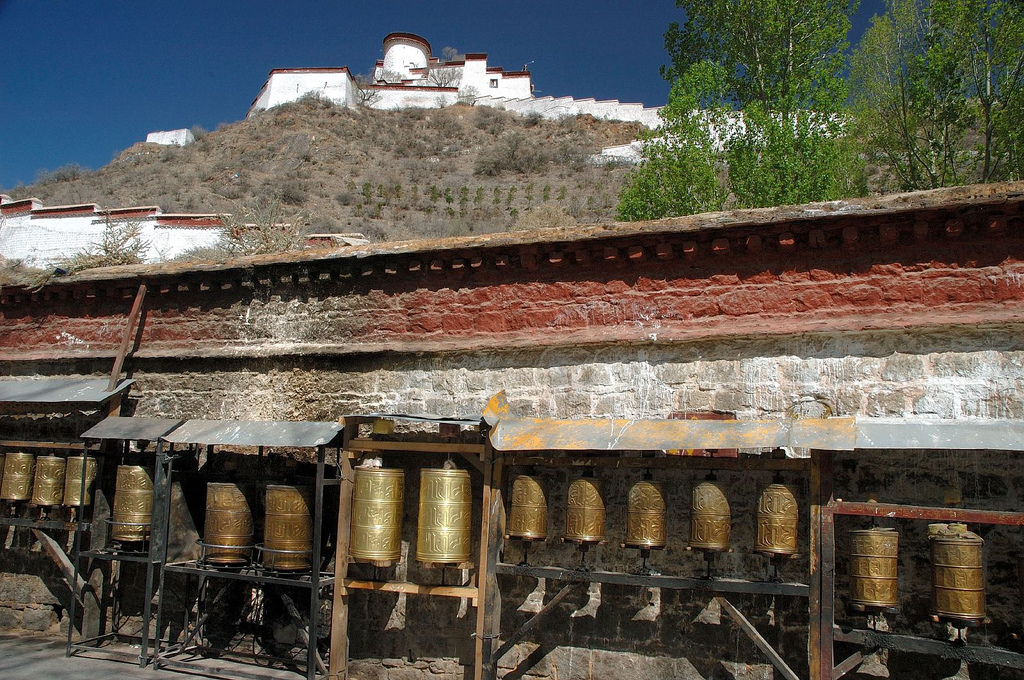
In the photo: Dharma Wheels – Photo credits: Jack Versloot
Q: Looking back on your life for a moment, is there anything you might have done differently? Can you tell us at what moment you suddenly realized that your marketing career wasn’t enough for you and that you needed something more, a more spiritual life?
On the contrary, Claude, I wish I had fully internalized the Sanskrit concept of dharma before. Dharma means the innate tendency of every being. The fire burns, the water quenches, the ice is cold, in the same way, my dharma is a mix of some business, a lot of contemplation and a touch of creation. I think I’ve squandered some energy in idolizing full-time creators and lifestyle design entrepreneurs, neither of which is truly my dharma. I’m on my own model that uniquely makes sense for me—for four years, I express myself in my corporate job while planting the seeds of my next creation; in the one year I take off, I allow myself the space for it to nurture it into something transcendental without having any material pressure to do so. I just wouldn’t thrive in the constant grind of the entrepreneurial or artistic life. Knowing this sooner would have made me even more certain of my decisions.
Q: That is a truly unique approach to writing, Karan, a total contrast to the artist’s (and writer’s) creative life as viewed in the West! Do you have any advice for writers or for that matter, for anyone with a start-up, because in a way, a writer with a freshly minted book is very much like a start-up, facing the same challenges to market a new product?
I have tons and tons of marketing advice for writers because I’m surprised by how few of the right things writers do coming from the vantage point of my professional marketing career. But rather than give you a 10,000-word answer (!), I’ll say one thing above all others: try to make your book or your product your Mona Lisa, that one work that helps you touch transcendence and feels like it’s the absolute best you could do in that point of time. If you feel that way, you’ll have a manic urge to get the book out there and that’s’ the foundation of a strong marketing plan.
Thank you Karan, making your book (or product) your “Mona Lisa” is no doubt excellent advice even if it is hard to follow – but it ensures that you drive yourself as far as you can, and even beyond your limits…


